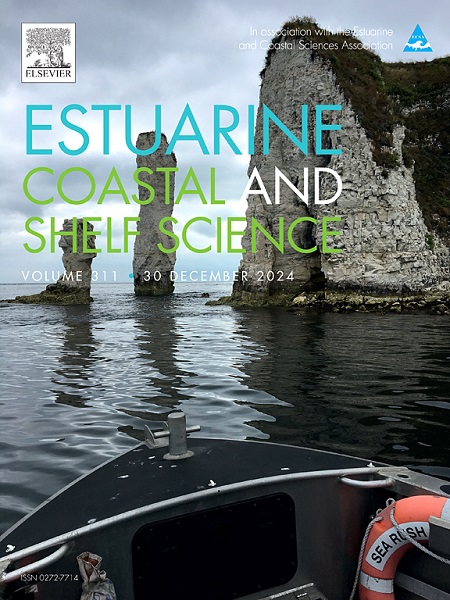Spatial and temporal variation in benthic foraminiferal assemblages record history of human activities within the Matagorda Bay system
IF 2.6
3区 地球科学
Q1 MARINE & FRESHWATER BIOLOGY
引用次数: 0
Abstract
The spatial variability of estuarine ecosystems poses challenges to ecosystem health assessment and makes remediation efforts costly and time-consuming. Benthic foraminiferal fossils preserved in estuarine sediments record past environmental conditions and can be used to assess spatial variability in ecosystem changes across an estuary through time. Here we use changes in the faunal composition and ecological structure of benthic foraminiferal faunas from 6 sediment cores from estuarine settings surrounding Matagorda Bay, Texas to assess the spatial variability of environmental changes over the last ∼400 years. Since ∼1950 CE, when human populations and industrial activity increased in the region, the richness and evenness of benthic foraminiferal assemblages decreased across the bay. The relative abundance of stress-tolerant taxa, such as Ammonia spp., also increased toward the present at all sites. However, the magnitude of change at each site varies and the specific changes in faunal composition reflect spatial differences in the intensity of environmental changes with sites close to protected areas changing less than sites close to point sources of pollution suggesting that benthic foraminifera can record local changes within a single estuary. However, benthic foraminiferal assemblages became more similar among sites after the intensification of human activities, suggesting increased stress is leading to faunal homogenization across the Matagorda Bay system.

求助全文
约1分钟内获得全文
求助全文
来源期刊
CiteScore
5.60
自引率
7.10%
发文量
374
审稿时长
9 months
期刊介绍:
Estuarine, Coastal and Shelf Science is an international multidisciplinary journal devoted to the analysis of saline water phenomena ranging from the outer edge of the continental shelf to the upper limits of the tidal zone. The journal provides a unique forum, unifying the multidisciplinary approaches to the study of the oceanography of estuaries, coastal zones, and continental shelf seas. It features original research papers, review papers and short communications treating such disciplines as zoology, botany, geology, sedimentology, physical oceanography.

 求助内容:
求助内容: 应助结果提醒方式:
应助结果提醒方式:


